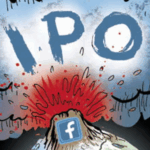 Digital out-of-home (OOH) ad sellers are looking for a boost from ad tech, but obstacles remain if the marketplace is to ever resemble online advertising.
Digital out-of-home (OOH) ad sellers are looking for a boost from ad tech, but obstacles remain if the marketplace is to ever resemble online advertising.
Digital billboard advertising today is reminiscent of the early days of ad tech in online advertising, according to industry veterans, with ad tech vendors making inroads with sellers such as Lamar Advertising and the New York’s Metropolitan Transit Authority (MTA), who are looking to partner with vendors to sell their digital OOH ads.
Lamar Advertising is a century-old firm that claimed during a June investor presentation that it controls 18% of out-of-home ads in the United States, second behind Clear Channel Outdoor (19%) and just ahead of CBS Outdoor (16%), which altogether control more than half the OOH ads.
ADstruc, a workflow management platform for planning campaigns and buying and selling OOH ads, has partnered with all three, providing a well-supplied platform for marketers.
“We’ve created a workflow tool that automates a lot of the mundane tasks behind planning and buying (OOH) media,” said John Laramie, CEO of ADstruc. Buying and selling OOH ads traditionally has required direct sales with individual advertisers, and all of the back-and-forth communication that implies.
Lamar controls 2,000 large-format digital billboards in the United States and Canada, among 5,000 to 6,000 total, according to Ian Dallimore, innovation and digital strategist at Lamar.
“The technology and the ability to stream real-time messaging” have been drivers of growth in selling digital billboard ads, he said. “We are selling campaigns today that are one-, two-, three-day campaigns. We are also basing campaigns off of Twitter chatter, Instagram photos, as well as weather and traffic conditions.”
However, the industry is not quite ready for real-time bidding, according to Laramie and Dallimore.
“The problem with OOH and RTB is not all OOH is the same,” said Mark Boidman, managing director at investment banking advisory firm Peter J. Solomon Co. “Different billboard shapes, sizes, nature and scope and interaction time” all are factors for marketers, who are also negotiating different terms with the big three sellers (Lamar, Clear Channel Outdoor and CBS Outdoor), which don’t provide a uniform measurement of OOH ad performance.
Creating a uniform programmatic platform for digital OOH seems unlikely in the near future. On a conference call with investors, Lamar CEO Sean Reilly said the company is satisfied with simply making direct buys simpler for marketers and does not see the need to work with CBS Outdoor or Clear Channel Outdoor on a shared platform.
“It’s harder for the three of us to cooperate on this because we’re all kind of proud of the platforms we’ve built. I don’t see (cooperation) happening anytime soon,” he said.
New York’s MTA may help jumpstart programmatic buying in digital OOH. The agency has sent out a request for information for a new content management system for subway ads in 2015 and buses and trains by 2016. MTA runs 107 two-sided digital panels at subway stations, 153 digital informational kiosks and dozens of digital billboards.
“The MTA is big enough and has a big enough network that is comprised of digital that it could really serve as an example not just for other cities, but for the digital OOH industry in terms of what this medium could become,” Boidman said. “I’d imagine they’d want some kind of RTB platform and to track all of the data of who’s going where and what they’re doing.”
Among desirable features that MTA has requested from vendors are an “option for programmatic buying” and “a wide range of reporting options.” Responses are due Wednesday.
Despite its lack of adoption by major suppliers, RTB has been introduced on small scale for digital billboards. Wichita, Kan.-based Fliphound provides real-time bidding for advertisers on a tiny network of 14 digital billboards. Many marketers using the platform are small businesses who find it convenient to buy a few hours or days of OOH ad space, compared to the longer contracts required for traditional billboards.
“Most of (the big three) can’t cost effectively service small-to-medium-size business because the cost of sales is so high. By allowing people to pay as they go, you get a whole different audience” of marketers, said Douglas Robertson, CEO of Fliphound.
However, it will take adoption by the big three OOH sellers before RTB is widely available.
“You’ve got three players that control two-thirds of the U.S. market,” Boidman said. For RTB to catch on in digital OOH, “those three players need to get in a room and all agree on what this would look like, and how it would work.”












